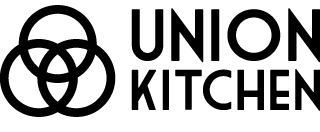How to Build a Resume
While concise, generally 1-2 pages, resumes perform the critical task of showing employers that you are a good fit. Needless to say, resumes are important. Luckily, we’re here to help. In this Union Kitchen guide, we’ll be going over how to create a professional looking resume.

Key Components to a Resume:
A resume includes several key sections detailing your experiences:
- Name and Contact Information
- Summary/Objective (optional)
- Education
- Professional Experience
- Skills and Certifications (optional)
- Additional accomplishments (optional)
- References (optional)
Some sections require more description than others, and some are optional.
Ways to Organize a Resume
Chronologically
This is the most common way of organizing a resume. It begins with your most recent experience and works back to your earliest experience.
Functionally
This is a less common way of organizing a resume, however it can be just as useful as it highlights your skills for the job.
Resume Building Tips
Keywords
Pull out keywords from the job description and sprinkle them into your resume when appropriate and relevant (skills, experience).
Consistency
Make sure you are consistent with the writing style and paper format. Use the same verb tense (past or present). Use the same font style, size, and color.
Show Don’t Tell
Show employers what you are capable of with hard and soft skills and action verbs. This will show what you are capable of achieving and how you perform.
- Hard Skills
- THINK: ServSafe, Excel, Microsoft Office, Logistics, Google Suite, Web Analytics, Food Preparation, Project Management, Budgeting, Operations.
- Soft Skills
- THINK: Teamwork, Leadership, Communication, Self-starter, Timely, Open-minded, Flexibility, Motivated, Dependable, Independent, Organized.
- THINK: Teamwork, Leadership, Communication, Self-starter, Timely, Open-minded, Flexibility, Motivated, Dependable, Independent, Organized.
- Action Verbs
- THINK: Appointed, Approved, Arranged, Analyzed, Calculated, Evaluated, Ensured, Guided, Forecasted, Initiated, Implemented, Led, Managed, Organized, Prepared, Restructured.
Proofread
Read over your resume multiple times to find errors. To prevent these common mistakes:
- -Choose which verb tense (past or present) to write in.
- -Review your contractions (its or it's).
- -Check your spelling (their, there, they're, your, you're).
- -Review your punctuation and capitalization.
- -Ask someone else to proofread your resume in case you missed anything.
Visuals & Legibility
Make sure employers can read your resume. Highlight certain titles with bold prints, italics, or capital letters. Choose a white background, dark text, and a readable font (such as Arial, Times, New Roman, or Calibri). Make sure the text is not too small to read.
Resume Checklist
Header
- Your contact information
Education
- Completed degrees or courses
Professional Experience
- Years of employment
- Job Title
- Company Name
- Job description
Final Notes
- Consistent in font, font size, font color, background color.
- Employers can read your resume because the font is not too small.
- Proofread for errors and misspellings.
- Consistent with verb tenses.
- Review punctuation and capitalizations.
Now, you’re ready to start crafting your resume. By following these guidelines, your resume will come out looking neat and professional. This will make your resume stand out from the crowd and get you closer to the job. For more helpful guides like this, be sure to check out Union Kitchen’s Resource Guides.

Comments